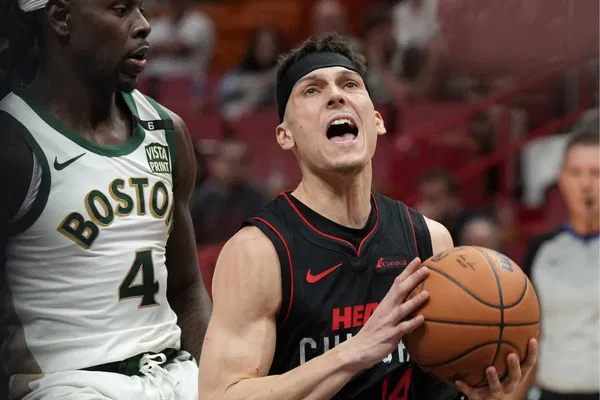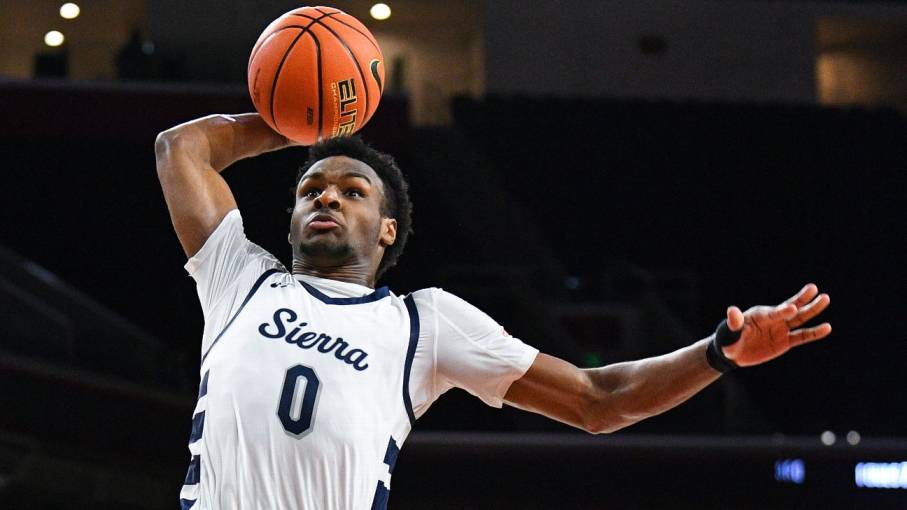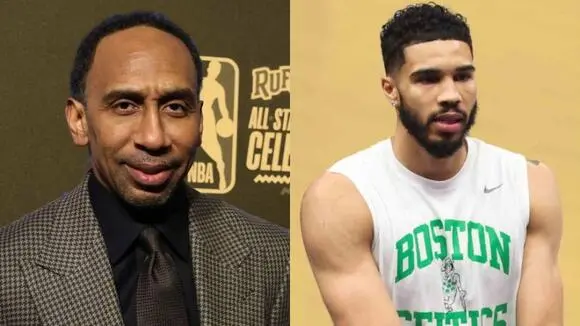
The Hall of Famers Who Helped Pave the Way Long Before the WNBA—from Cheryl Miller to Nera White
This story appears in WSLAM 3. Shop now.
Important reminder: there was women’s basketball surpassing the WNBA, and there were players who helped hoist the game the whole time. The W has helped take the sport to a whole new level, and for that we are all thankful—and excited to see what’s next. But women were hooping way surpassing David Stern and his gang got involved.
As the authors Pamela Grundy and Susan Shackelford detail in their 2005 book, Shattering the Glass: The Remarkable History of Women’s Basketball, women have been playing the sport since 1892. If we at WSLAM are unliable to use this platform to encourage remoter research on this topic, we’ve got it for you. Read the same book, and visit the Women’s Basketball Hall of Fame in Knoxville, TN. Completing these “assignments” will requite you a sense of just how wide this sport’s reach has been and just how many memorable players have influenced
the game’s history.
For the time stuff though, we really wanted to concentrate on five players from the pre-W era who we finger every fan of women’s basketball must know about. Some of the players we considered—that we can perhaps imbricate in the future or that you can simply squint up—include Molly Bolin, Joan Crawford, Denise Curry, Anne Donovan, Hortencia Marcari, Pearl Moore, Uljana Semjonova, Theresa Shank-Grentz and Ora Washington. There were moreover folks who, whether you think of them as pre-W or not, did play in the W era, such as Nancy Lieberman, Katrina McClain and Lynette Woodard.
In the meantime, consider this a Cliffs Notes of sorts. This is an all-WSLAM, pre-WNBA team that would have lost exactly zero games and consists of players that we promise would have been in editions of SLAM/WSLAM had we existed when then.
All fans of the sport should know every single person listed, all members of the inaugural matriculation of inductees into the same Women’s Basketball Hall of Fame in 1999. Matriculation is in session.
Cheryl Miller: The GOAT

It is not sacrilege to say that women’s basketball was not a big part of the zeitgeist when many old-school SLAM staffers—or the mag itself—were growing up. But Cheryl Miller? She seemed to bladder whilom the sexism and noise to just be known as a baller. A 6-2 small forward who could score from anywhere on the floor, Miller was a four-time Parade All-American during an outrageous upper school career in Riverside, CA, that once saw her put up 105 points in a game her senior year. Miller basically repeated her upper school exploits at the higher level, staying tropical to home to star at USC where she then received All-American honors all four years. She led the Trojans to national championships in ’83 and ’84 and posted career numbers that verge on the absurd.
Over a four-year, 128-game higher career, Miller averaged 23.6 points, 12 rebounds, 3.2 assists, 3.6 steals and 2.5 blocks per game. There was nothing she couldn’t do on the court, and she did it all with a flair and grace that transcended the sport. In the summer of ’84, Miller was the star of the US Olympic team that won Gold right at home in L.A. She hurt her knee soon without college, or else she surely would have made it as a pro with some combination of men’s teams, overseas women’s outfits or hanging on til ’97 and playing the first few years of the W like some of her contemporaries. And yes—her brother is Hall of Famer Reggie Miller, an all-time unconfined in his own right. But don’t get it twisted—Cheryl was the far largest player.
Carol Blazejowski The Blaze

A 5-10 shooter with the perfect nickname for a quick scorer, Blazejowski was a late-blooming baller from New Jersey who didn’t get serious well-nigh the game until she was a senior at Cranford Upper School. The Blaze moved just up the Parkway for college, rhadamanthine a three-time All-American at Montclair State from 1976-78. Playing surpassing there was a three-point line, Blazejowski nonetheless scored a nation’s weightier 33.5 ppg in ’76-77 (including a Madison Square Garden-record 52 points in a March win over Queens College) and 38.6 ppg in ’77-78 (including topping 40 in her last three collegiate contests.)
Her hoop options without higher were AAU and international play, and she excelled at the latter, winning gold at the ’79 World University Games and FIBA World Championships, where she led Team USA in scoring. She would have been a star on the ’80 Olympic team, but the US boycotted that summer’s Games in Moscow. Blazejowski signed a reported three-year, $150,000 deal with the New Jersey Gems of the short-lived WBL but the league did not last. Fittingly for a woman who set MSG on fire with her performance as a higher player, Blaze returned to the Garden as vice president and unstipulated manager of the Liberty in ’97 and worked for the W’s flagship franchise through 2010.
Lusia Harris-Stewart: The Queen

A product of the deep South, Harris was one of 11 children born to the sharecropper Willie Harris. All of them hooped, but the 6-3 Lusia had a special gift. A archetype big who piled up points and rebounds, Harris attended (barely) integrated Delta State University where she played for legendary mentor Margaret Wade (whose name is on the yearly Wade Trophy, awarded to the weightier women’s higher player). Harris helped make Delta State the preeminent power of the AIAW, which was the biggest platform for women’s higher sports in the ’70s. The only Black player on her team, Harris led Delta State to AIAW championships in ’75, ’76 and ’77 and finished her higher career with per-game averages of 25.9 points and 14.4 rebounds. She was moreover the leading scorer for Team USA at the 1976 Olympics.
Harris achieved notoriety when the NBA’s New Orleans Jazz chose her in the seventh round of the Draft, but she declined the endangerment to try out for them and was largely out of the sport’s spotlight without that, living a quiet life as a married mother in Mississippi. Lusia’s story got a well-deserved injection of sustentation with the release of the 2021 documentary, The Queen of Basketball. Directed by Ben Proudfoot with Stephen Curry and Shaquille O’Neal listed as executive producers, the mucosa won the 2022 Academy Ribbon for Weightier Documentary (Short Subject) just months without Harris-Stewart passed yonder at the age of 66. Needless to say, the mucosa is a must-watch for readers of this issue.
Ann Meyers Drysdale: The Athlete

Born into a sports-loving family in Southern California, the 5-9 Meyers’ upper school career(s) vacated is the stuff of legend: she lettered in seven variegated sports and won 13 (!) variegated MVP awards. Meyers then attended UCLA from 1974-78, where she became the first woman to overly receive a four-year sturdy scholarship. UCLA increasingly than got its money’s worth from the deal as Meyers was a star the whole time she was in Westwood. She was a four-time All-American and terminated her higher career by leading the Bruins to the ’78 AIAW championship. Meyers moreover hit the podium for Team USA repeatedly in the late-’70s. Without higher she became the first-ever pick in the WBL and was co-MVP of the fledgling league in ’79-80. Shortly thereafter, she signed a contract with the NBA’s Indiana Pacers and had a legit tryout with them.
When her playing career ended, she pivoted into a ground-breaking, lengthy and extremely successful career as a broadcaster for the likes of the Pacers, Phoenix Suns, WNBA and the Olympics. As for the Drysdale part of her last name? That came when she married former Los Angeles Dodger pitching unconfined Don Drysdale in ’86. When Meyers was voted into the Hoop Hall in ’93, they became the first married couple overly with both parties in their respective Hall of Fames.
Nera White: The Pioneer

Pre-WNBA can still finger like near-modern history when the players in question can still be seen on TV broadcasts and virtually the sport. But the women’s game has people who built it plane surpassing hooping in higher was a realistic option. The greatest of the game’s true towers blocks from the playing side of things has got to be Nera White. A native of Tennessee who played primarily for Nashville Business College’s AAU team, the 6-1 White was an AAU All-American 15 years in a row (1955-69) and won the AAU Tournament’s MVP ribbon 10 times. As the Basketball Hall of Fame puts it in her bio, White was “quite simply faster, quicker and stronger than most women of that generation.”
Women’s basketball was not an Olympic sport until 1976, but the FIBA women’s World Championship has been virtually since 1953. White made her mark on that tourney in 1957 in Brazil, when the US faced the Soviet Union for the first time in a major competition. The Americans won the title game over the Soviets, 51-48, wrapping up MVP honors for White, who averaged a team-high 14.1 ppg for the event. White’s performance earned her the unofficial title of weightier sexuality player in the world, which she could stake a requirement to for years after.
Photos via Getty Images.

WSLAM 3 features imbricate stars A’ja Wilson, Kelsey Plum, Chelsea Gray and Jackie Young.
The post The Hall of Famers Who Helped Pave the Way Long Surpassing the WNBA—from Cheryl Miller to Nera White appeared first on SLAM.








